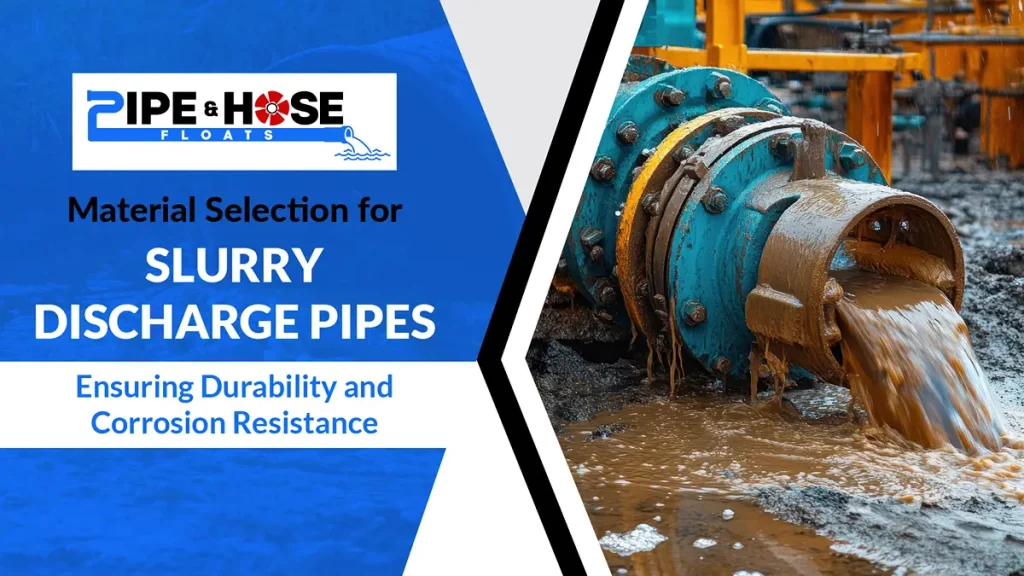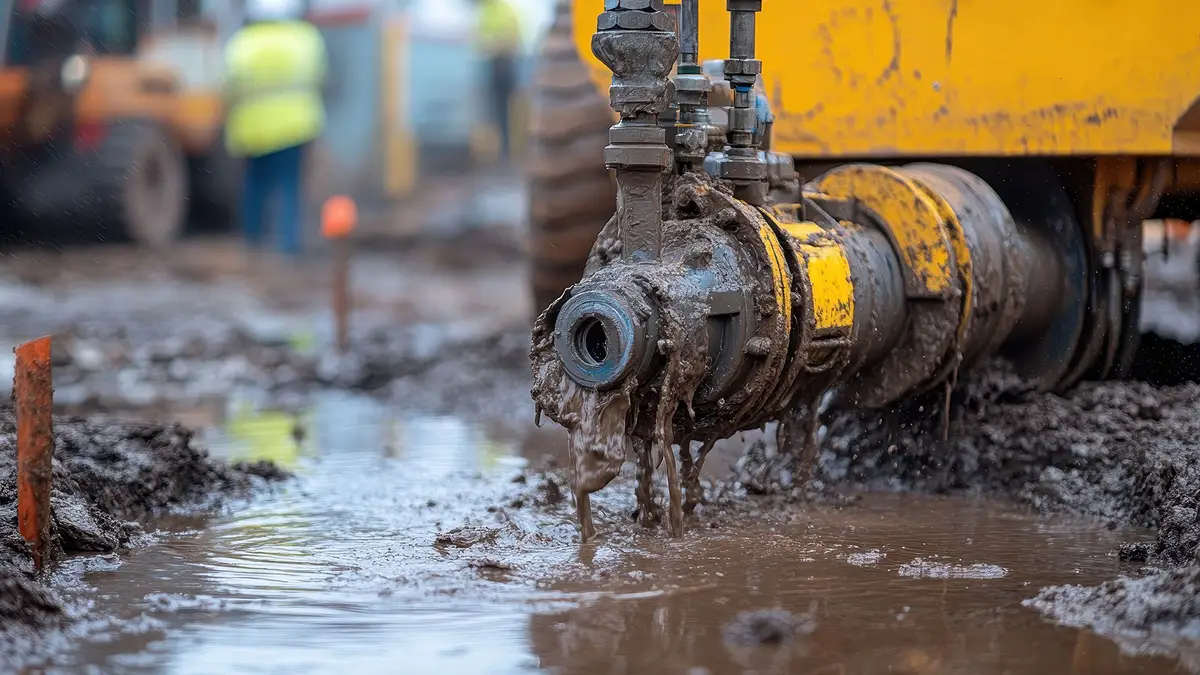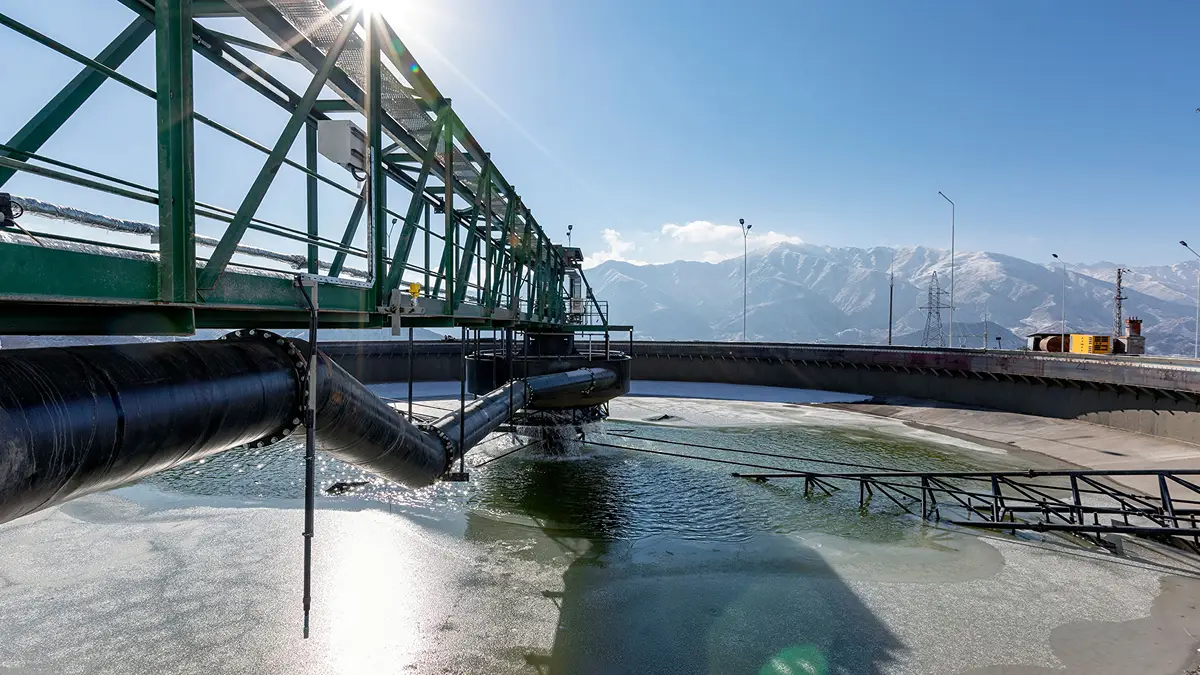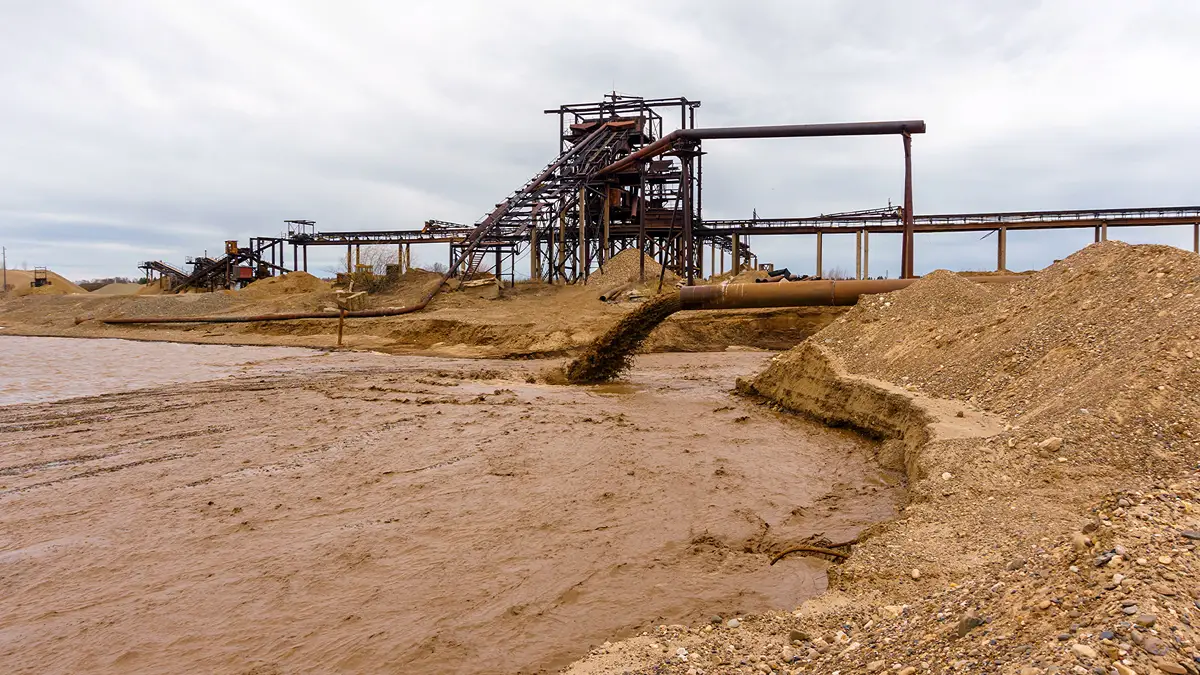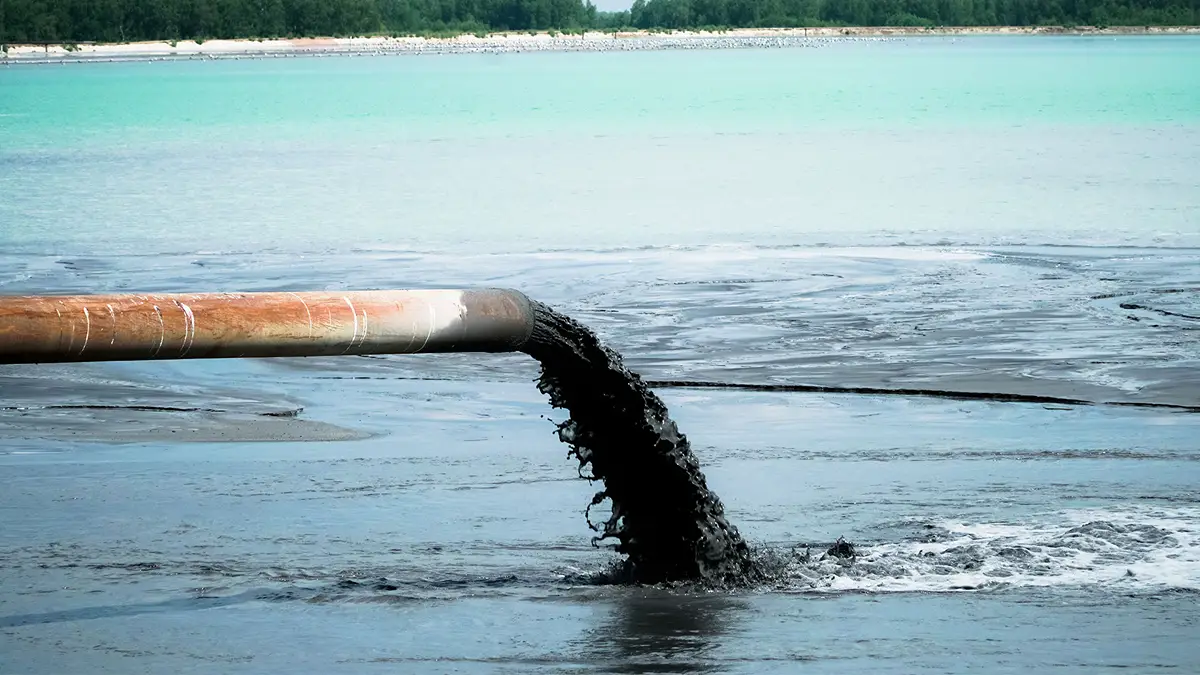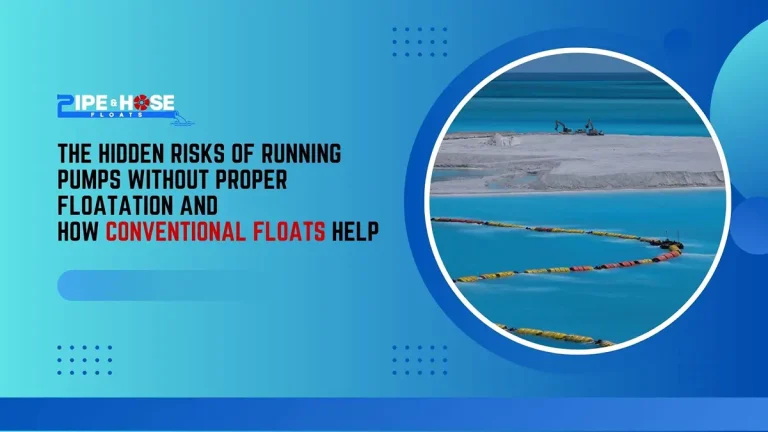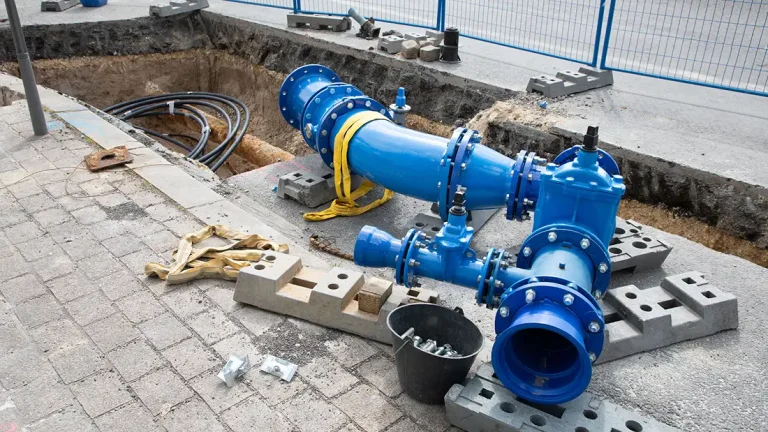Introduction
Slurry discharge pipes play a vital role in transporting slurry, which is a mixture of liquids and solid particles, often used in industries such as mining, construction, wastewater treatment, and chemical processing. These pipes are subjected to some of the most challenging conditions, including high pressures, abrasive materials, corrosive environments, and fluctuating temperatures. To ensure optimal performance and longevity, selecting the right material for slurry discharge pipes is essential.
Choosing the correct material ensures that the pipes maintain their structural integrity, resist corrosion, and withstand wear and tear from abrasive slurry. Additionally, it can significantly reduce maintenance costs and operational downtime. This article explores the critical factors to consider when selecting materials for slurry discharge pipes, with a focus on durability, corrosion resistance, and overall performance in demanding environments.
Understanding the Demands of Slurry Discharge Systems
What is a Slurry Discharge Pipes?
Slurry discharge pipes are designed to carry slurry from one location to another, often over long distances or between different processing units. The slurry in these pipes typically contains solids suspended in liquids, such as sand, mud, or chemicals. In many industrial applications, slurry discharge pipes need to handle highly abrasive, corrosive, or high-temperature fluids that can degrade the material over time.
Challenges Faced by Slurry Discharge Pipes
The harsh conditions in which slurry discharge pipes operate pose several challenges, including:
- Corrosion: Many slurries contain aggressive chemicals or acidic compounds that can corrode the pipe material.
- Abrasion: Slurry, especially when it contains coarse solids like sand or gravel, can cause significant wear on the internal surface of the pipe.
- Pressure: Slurry discharge pipes are often exposed to high-pressure conditions, which can lead to fatigue and failure if the material isn’t up to the task.
- Temperature Variations: The temperature of the slurry can fluctuate, making it necessary to select materials that can handle thermal stress.
In addition to slurry discharge pipes, associated components like the slurry fill pipe and slurry hose also face similar challenges. These components must be able to handle high flow rates, temperature extremes, and potential chemical reactions within the slurry.
Factors to Consider for Material Selection
When selecting materials for slurry discharge pipes, it is crucial to consider various factors that can influence the performance and longevity of the system. Here are the key considerations:
Corrosion Resistance
One of the most important aspects of slurry discharge pipes is their ability to resist corrosion. Slurries can contain aggressive chemicals, acidic substances, or salts that can break down certain materials over time. Materials used in slurry discharge systems must be selected for their ability to resist corrosion, as failure due to corrosion can lead to leaks, costly repairs, and system downtime.
Durability and Wear Resistance
The nature of slurry, particularly when it contains abrasive particles, can result in significant wear on the inside of the pipes. Over time, the material can degrade, leading to reduced flow capacity, leaks, and system failure. Materials with high abrasion resistance, such as certain metals, ceramics, or lined pipes, are critical in ensuring that slurry discharge pipes remain functional for an extended period.
Chemical Compatibility
In many cases, the chemical composition of the slurry can vary significantly depending on the industry and the type of materials being transported. For example, slurry used in mining may have a high concentration of chemicals that can interact with certain metals, while wastewater slurry may have a different chemical profile. The material selected for slurry discharge pipes must be chemically compatible with the slurry to avoid degradation, contamination, and potential failure of the pipe system.
Pressure and Temperature Endurance
Slurry discharge pipes are often subjected to high pressures, especially in systems with large volumes of slurry being pumped over long distances. The materials used must be able to withstand these high-pressure conditions without deforming or failing. Additionally, slurry systems may operate in extreme temperatures, ranging from freezing conditions to high heat. The material must be able to endure these thermal fluctuations without losing its integrity or performance.
Common Materials Used for Slurry Discharge Pipes
There are several materials commonly used in slurry discharge pipes, each offering unique advantages depending on the application and environmental conditions. These materials vary in terms of their strength, resistance to wear and corrosion, and their ability to handle pressure and temperature fluctuations.
Steel-Based Materials
- Carbon Steel: Carbon steel is a commonly used material for slurry discharge pipes, offering a good balance between cost and strength. However, carbon steel is prone to corrosion when exposed to certain chemicals and harsh environments. It may require additional protective coatings or linings to enhance its performance in slurry systems.
- Stainless Steel: Stainless steel is a superior material in terms of corrosion resistance compared to carbon steel. It is often used in slurry discharge pipes that transport highly corrosive materials. Stainless steel’s resistance to rust and corrosion makes it ideal for handling acidic or chemically aggressive slurries. However, stainless steel can be more expensive than carbon steel.
Polymer-Based Materials
- Polyvinyl Chloride (PVC): PVC is a lightweight, cost-effective material commonly used in slurry discharge pipes, especially in applications where chemical resistance is required. PVC pipes can resist corrosion from certain chemicals but may not be as durable in abrasive environments. It is a good choice for handling less aggressive slurries in moderate pressure systems.
- High-Density Polyethylene (HDPE): HDPE is a versatile polymer used in slurry discharge systems due to its excellent corrosion resistance, chemical compatibility, and impact resistance. It is commonly used in mining and wastewater treatment applications.
Rubber Lining and Coatings
Rubber linings and coatings are commonly applied to the interior of slurry discharge pipes to enhance their durability and resistance to abrasion. Rubber linings can absorb the impact of abrasive particles in slurry, helping to extend the life of the pipe. Rubber-coated pipes are often used in mining operations where the slurry contains a high percentage of abrasive materials.
Additionally, rubber hose, or slurry hose, offer flexibility and resistance to both abrasion and chemical degradation. These hoses are used in slurry discharge systems that require a high degree of flexibility, such as when transporting slurry between mobile equipment or in environments where pipes need to be easily repositioned.
Composite Materials
Composite materials, which combine the strengths of different materials, are increasingly being used in slurry discharge systems. These materials can be designed to offer a combination of high strength, lightweight properties, and excellent corrosion and abrasion resistance. Composite pipes can be custom-engineered to meet the specific needs of slurry systems, making them suitable for a wide range of applications, from mining to industrial waste management.
Evaluating the Right Material for Your Slurry Discharge System
Choosing the right material for slurry discharge pipes requires careful evaluation of the specific needs of the system. Here are some key considerations to ensure that the selected material is the best fit:
Assessing Application-Specific Needs
The first step in evaluating the material for slurry discharge pipes is understanding the specific requirements of the application. What type of slurry will be transported? What are the characteristics of the slurry, such as its chemical composition, temperature, and abrasiveness? Is the system subject to high pressure or extreme temperatures? Once these factors are understood, the appropriate material can be selected.
Cost vs. Performance
Material selection is also a matter of balancing cost with performance. While high-performance materials like stainless steel or composite materials offer superior resistance to wear and corrosion, they can come with a higher upfront cost. On the other hand, materials like PVC or carbon steel may be more cost-effective but may require more frequent maintenance or replacement, leading to higher long-term costs.
Maintenance Considerations
Different materials have varying maintenance requirements. Steel pipes, for example, may require regular inspection for corrosion, while polymer materials like HDPE may require less maintenance but can be prone to damage from physical impacts. Rubber-lined pipes can offer long-term protection against abrasion but may require periodic replacement of the rubber lining.
Innovations in Slurry Discharge Pipes Materials
The materials used in slurry discharge pipes have evolved over time, with ongoing advancements aimed at improving performance, longevity, and sustainability. Some recent innovations include:
Advanced Materials and Technologies in Slurry Discharge Pipes
In recent years, significant advances have been made in the development of materials for slurry discharge pipes. The demands on these pipes, including resistance to corrosion, abrasion, and chemical degradation, have driven innovation in materials science. Traditional materials such as carbon steel or PVC, while effective, are being complemented by newer, more robust composite materials that offer enhanced performance. These materials combine the best properties of metals, polymers, and ceramics, creating a much more durable solution for slurry discharge pipes.
Advanced Composite Materials for Durability and Performance
Composite materials are engineered to take advantage of the strengths of different materials. For slurry discharge pipes, composite pipes combine the resistance to wear and corrosion found in metals with the flexibility and chemical resistance of polymers. These composite materials are particularly effective in harsh environments where traditional materials might fail, such as in mining, wastewater treatment, or chemical processing industries.
Moreover, composite slurry discharge pipes are often lighter than metal pipes, which makes them easier to handle and install, particularly in remote locations where heavy lifting equipment may not be available. Their durability also ensures they can withstand the pressures and thermal fluctuations often seen in slurry transport, ensuring long-term performance.
Enhancements in Rubber Lining and Slurry Hose
Rubber linings are another technological improvement that has significantly enhanced the durability of slurry discharge pipes. Traditionally, rubber linings have been used to protect pipes from the abrasive nature of slurry, especially in industries such as mining, where the slurry can contain sharp-edged particles. Recent improvements in rubber materials have increased their resistance to wear and chemical degradation, ensuring that they remain effective for longer periods.
Rubber linings are now being used in a variety of applications, including as coatings for slurry fill pipe and slurry hose. These pipes are often subjected to both internal and external stresses, and rubber linings provide an effective barrier that prevents damage to the pipe walls. Furthermore, rubber-lined slurry hose provides flexibility and resilience, allowing them to be used in situations where rigid pipes would fail or be impractical. The flexibility of these hoses makes them ideal for moving slurry between different points in a system or for use in mobile slurry transport systems.
Future Trends in Material Selection for Slurry Discharge Pipes
Sustainability is increasingly becoming a major factor in material selection for slurry discharge pipes. As industries look for ways to reduce their environmental footprint, the focus is shifting towards eco-friendly materials that offer the same durability and performance as traditional options. This growing trend toward sustainability is not just about minimizing waste, but also about creating materials that are more energy-efficient to produce and have a lower environmental impact throughout their lifecycle.
Bio-Based Polymers and Recycled Materials
Bio-based polymers are gaining traction as a viable alternative to traditional petroleum-based materials for slurry discharge pipes. These materials are made from renewable resources and offer comparable durability and chemical resistance to conventional materials like PVC or HDPE. The use of bio-based polymers can help reduce the reliance on fossil fuels and lower carbon emissions associated with the production of slurry discharge pipes.
In addition to bio-based polymers, the development of recycled materials is also playing a key role in the evolution of slurry discharge systems. Manufacturers are increasingly using recycled plastics and composites to create pipes that are not only strong and durable but also more environmentally friendly. Recycled materials help reduce the amount of waste in landfills and contribute to a circular economy by giving used materials a second life.
The Role of Sustainability in Slurry Systems
The move toward sustainability in slurry discharge systems also includes efforts to design longer-lasting pipes that require less frequent replacement and maintenance. By using advanced materials that are more resistant to wear, corrosion, and chemical degradation, companies can reduce the frequency of pipe replacements and lower maintenance costs over the long term. This approach is particularly beneficial for components like the slurry fill pipe and slurry hose, which are critical in transporting slurry efficiently. Using durable, high-performance materials for these components ensures that both the slurry fill pipe and slurry hose can withstand the abrasive nature of slurry and the harsh environments in which they operate.
As the demand for sustainable practices continues to grow, the slurry discharge pipes industry is likely to see more innovations in eco-friendly materials and practices. These new materials will provide the same or superior performance to traditional options, without the environmental costs. Additionally, industries may adopt more sustainable practices in the manufacturing and recycling of slurry fill pipe, slurry hose, and other components, ensuring that slurry discharge systems are both durable and environmentally responsible.
Conclusion
Selecting the right material for slurry discharge pipes is essential for ensuring their durability, performance, and longevity in demanding environments. Factors such as corrosion resistance, durability, chemical compatibility, pressure and temperature endurance, and cost should be carefully evaluated when choosing materials. Steel, polymer-based materials like HDPE and PVC, rubber linings, and advanced composite materials each offer unique advantages depending on the specific needs of the slurry system.
By understanding the requirements of the application and the properties of various materials, industries can ensure that their slurry discharge pipes remain reliable and efficient, reducing the need for frequent maintenance and repairs while maximizing the lifespan of the system.

